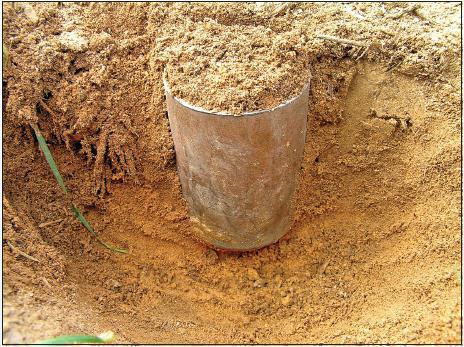Coefficient of loosening of soil is an important parameter of construction works
Construction works start from the place of marking andexcavations for the foundation. Soil extraction occupies an important place in estimating the cost of construction, and a considerable amount of money is needed to pay for technologies that produce soil removal. To compile a budget and estimate the cost it is not enough to know only the size of the pit - it is also necessary to take into account the characteristics of the soil. One of these characteristics is the rate of loosening of the soil, allowing to determine the increase in volume after removal of the soil.
A vivid example of calculations
Whatever the construction work, all of themmust begin with the layout (layout) of the site and foundation preparation. In the estimates that are provided to the customer by construction firms or the owner, excavation always takes first place. The ordinary consumer is sure that only the excavation of land and its export are included in the assessment of the preparatory work. However, such work can not be done without taking into account the characteristics of the soil. An important characteristic is the soil loosening factor (KRG). Do you want to understand what exactly is going on and calculate the cost of construction yourself? It's possible. Let's consider the question in more detail.

What is the coefficient of soil loosening?
Soil volumes before development and after excavationare significantly different. It is the calculations that allow the contractor to understand what amount of soil has to be taken out. To compile an estimate of this part of the work, the soil density, moisture level and loosening are taken into account.
In construction, soil types are conventionally divided into two main types:
- cemented;
- uncertified.

The second species is uncemented rocks. They differ in their dispersion, they are easier to process. Their density is much lower, so the development can be done manually, using special equipment (bulldozers, excavators). Unspecified form includes sand, loam, clay, chernozem, mixed ground mixtures.
The most important factors determining the cost of preparatory excavation work
What do you need to consider when counting? The complexity of development and, accordingly, the cost of work depends on four indicators:
- humidity (water content in solid particles);
- density (the weight of the cube of the ground before the development, in the natural state);
- adhesion (shear strength);
- looseness (ability to increase volumes in development).
Coefficient of loosening the soil is a table (see below).

We take into account construction norms
The moisture content of the soil is fixed in percent. The norm is 6-24%. Accordingly, 5% and below - dry soils, and 25% and higher - wet.
Knowledge of the adhesion indicators allows you to prevent a shift in the formation during work. The index of sandy loam usually does not exceed 3-50 kPa. For clays, it is much higher and can reach 200 kPa.
Density is regulated by the composition of the earth and its humidity. In the lightest categories there are sandy loam, sand; in the densest - rocky grounds, rocks.
Important: the initial loosening data is exactly proportional to the density: the heavier the soil, the denser and stronger, the more space it will occupy after the seizure, in a selected form.

CD on SNIP
Coefficient of loosening soil by SNIP:
- KR of loose sandy loam, wet sand or loam at a density of 1.5 is 1.15 (category one).
- The CD of dry uncompacted sand at a density of 1.4 is 1.11 (category one).
- The CR of light clay or very fine gravel at a density of 1.75 is 1.25 (the third is the second).
- The CD of dense loam or ordinary clay at a density of 1.7 is 1.25 (category three).
- CR shale or heavy clay at a density of 1.9 is 1.35.
The density is left by default, t / m3.
Residual loosening
This indicator reflects the condition of theof the soil. It is known that the layers, loosened during the development of the site, eventually crocheted. There is a condensation, sediment. The natural process accelerates the action of water (rain, artificial irrigation), high humidity, tamping machines.
In this case, calculate this indicator is not necessary - it is already known and can be viewed in the table above.
The figures reflecting the residual loosening haveimportance in both large (industrial) and private construction. They allow you to calculate the amount of gravel that will go under the foundation. In addition, the indicators are important for storing the selected soil or its disposal.

We count independently
Let's say you want to develop a site. The task is to find out what amount of soil will be obtained after the preparatory work. The following data are known:
- width of foundation pit - 1,1 m;
- type of soil - wet sand;
- the depth of the excavation is 1.4 m.
Calculate the volume of the excavation (Xk):
Xk = 41 * 1.1 * 1.4 = 64 m3.
Now we look at the initial loosening (soil loosening coefficient for wet sand) according to the table and consider the volume that we will get after the works:
Xr = 64 * 1.2 = 77 m3
Thus, 77 cubes - this is the volume of the layer, which is subject to removal at the end of work.




